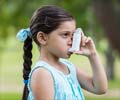
The findings also suggest that individuals over the age of 60 who have severe asthma may require a larger dose of vaccine.
"The results of this clinical trial show that the 2009 H1N1 influenza vaccine was safe and led to adequate production of antibodies thought to be protective against the virus," NIAID Director Anthony S. Fauci said.
In late 2009, National Institute of Allergy and Infectious Diseases /NIH rapidly designed and sponsored a clinical study to determine the dose and number of doses of the 2009 H1N1 influenza vaccine needed to safely produce a protective immune response in people with asthma.
In these trials, a single dose of the vaccine containing 15 micrograms of the influenza hemagglutinin molecule-the main target of the protective antibody response-was found to be well tolerated and induced a strong immune response in most participants.
The study enrolled 390 people aged 12 to 79 years with asthma.
Advertisement
In participants with mild to moderate asthma, and in most participants with severe asthma, a single 15-microgram dose was sufficient to induce a presumably protective immune response.
Advertisement
The findings appeared online in the Journal of Allergy and Clinical Immunology.
Source-ANI















